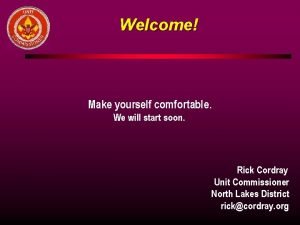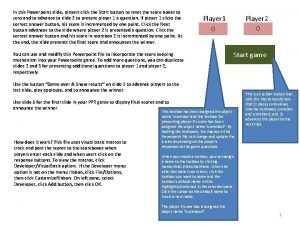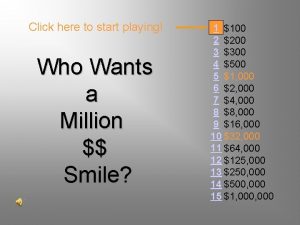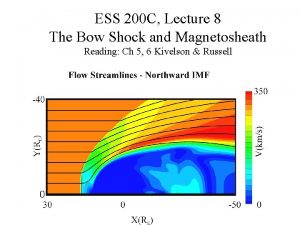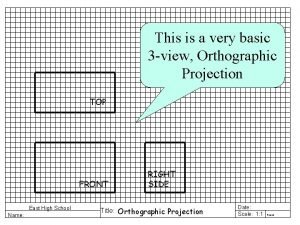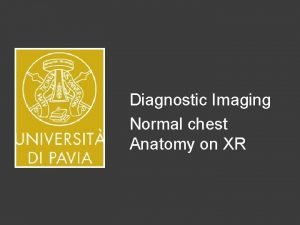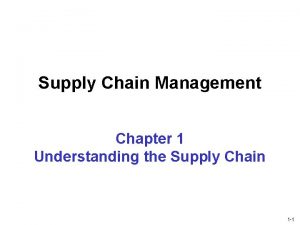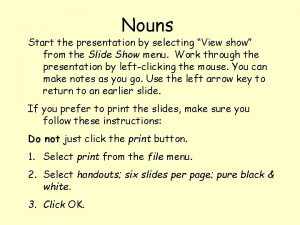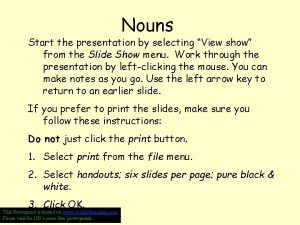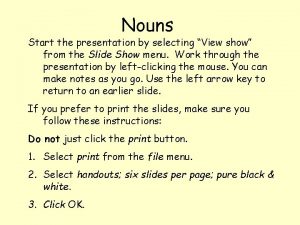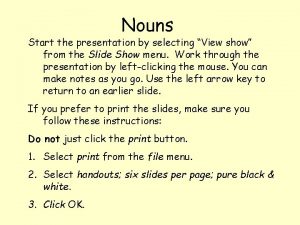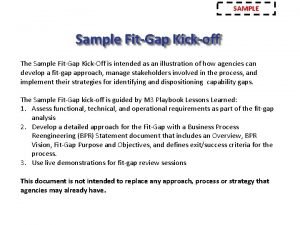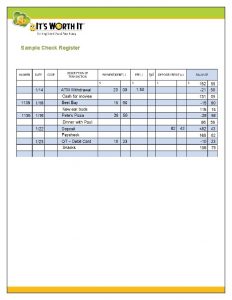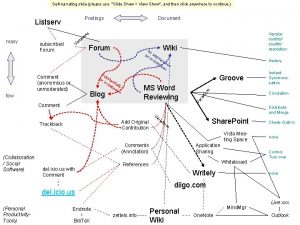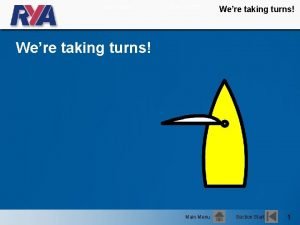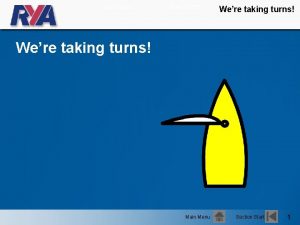Sample presentation START HERE Go to View Show










































- Slides: 42

Sample presentation

START HERE: Go to. . . View > Show Speaker Notes

The History of Transportation Science & Tech 11 Class Project Semester 1, 2010 / 2011 Main Sources: http: //inventors. about. com/library/inventors/bl_history_of_transportation. htm http: //en. wikipedia. org/wiki/Timeline_of_transportation_technology

The History of Transportation You will be marked on how well you 1. research, 2. record, 3. format, 4. and EDIT your information Main Sources: http: //inventors. about. com/library/inventors/bl_history_of_transportation. htm http: //en. wikipedia. org/wiki/Timeline_of_transportation_technology

5500 BC The First Wheel Antonio The first wheel 1. The oldest wheel found in archeological excavations was discovered in what was Mesopotamia and is believed to be over fifty-five hundred years old. 1. Humans realized that heavy objects could be moved easier if something round, for example a fallen tree log, was placed under it and the object rolled over it.

4000 -3500 BC Horses 1. first horses were all wild 2. they were hunted used for their meat and skin for leather 3. 4000 BC people in central asia began to tame horses 4. used to carry things Gerry Horse central asia

3500 BC River Boats 1. first boats built out of inflated and stretched animal skins and clay pots 2. early wood boats included rafts, canoes, and dugouts 3. Egyptians used reeds to caulk seams 4. little is known about how these ships were actually put together by MVG Ancient Egyptian boat called a "dory"

Jayden 3000 BC Chariots 1. The chariot is the earliest and simplest type of horse carriage, used in both peace and war as the chief vehicle of many ancient peoples. 2. The critical invention that allowed the construction of light, horsedrawn chariots for use in battle was the spoked wheel. 3. The earliest spoke-wheeled chariots date to ca. 2000 BC and their usage peaked around 1300 BC

181 -234 AD Wheelbarrow 1. Chuko Liang of China is considered to be the inventor of the wheelbarrow. 2. The wheelbarrows were used to transport supplies and injured soldiers 3. Chinese wheelbarrows had two wheels 4. required two men to propel and steer Connor A Wheelbarrow For Freight.

770 AD Horseshoes 1. Inventor is unknown 2. Early asian horsemen used horse booties made from leather and plants 3. First centuary, Romans made leather and metal shoes called "hipposandals" 4. 1000 AD European horseman had begun nailing metal shoes to horses hooves Rhett

1492 leanardos flying machines Justin 1. 1487 made his first drawing of a air craft 2. in 1490 leonardo produced drawings for the first ornithopter 3. Later he stoped working on flaping wing design and started on fixed wing design. 4. He also made a helicopter and parachute designs. 5. Almost all of leonardos designs were built in recent years to test

1620 first Submarine 1. Designs for underwater boats or submarines date back to the 1500 s and ideas for underwater travel date back even further. However it was not until the 19 th century that the first useful submarines began to appear. 2. The first American submarine is as old as the United States itself. David Bushnell (1742 -1824), a Yale graduate, designed and built a submarine torpedo boat in 1776. The one-man vessel submerged by admitting water into the hull and surfaced by pumping it out with a hand pump. Antonio first submarine (turtle submarine)

1662 Rhett Blaise Pascal's Public Bus 1. 1662 Blaise Pascal invented the first public bus 2. It was horse drawn 3. It had a regular route schedual and fare system

Sean 1783 Paddle Wheel Steam Boat The use of paddle wheel in navigation first appears in the mechanical treatise of the Roman engineer Vitruvius. Vitrivius described multi-gear paddle wheels working as a ship odometer. The first mention of paddle wheels as a means of propulsion came from a 4 th-5 th century military treatise. A modern paddle wheel steam boat.

1783 Hotair Balloon 1. Hot air balloons first flew in the air by two brothers named, Joseph and Etienne Montgolfier in 1783. 2. The materials they used are very different from us, but we still use their basic principles. 3. These Balloons can fly because they are buoyant, this means they are lighter than the air it displaces. Jessica

Rhett 1769 Self Propelled Road Vehicle 1. Built by French engineer Nicolas-Joseph Cugnotin 1769 2. Designed to pull heavy artillary 3. Moved at a walking pace and had to stop every 1215 minutes to raise the steam pressure 4. It could pull up to 5 tonnes

1790 Bicycle Gerry 1. also known as a bike, pushbike or cycle 2. introduced in the 19 th century 3. twice as many as automobiles. 4. A bicycle, also known as a bike, pushbike or cycle walking machine

Elijah 1801 Richard Trevithick's Steam Locomotive 1. Worlds first railway: 21, 2, 1804. from Merthyr Tydfil to Abercynon, Wales 2. An earlier model of the steam locomotive was designed by John Fitch during the 1780's-90's 3. Most models of steam locomotive use a steel fire-tube boilers 4. Richard Trevithicks designed the Full scale replica of Richard Trevithick's Steam locomotive, in first steam locomotive in the National Waterfront Museum United Kingdom

1807 Gerry First Steamboat John Fitch - Design Sketch ca. 1787 1. the era of the steamboat began in america in 1787 2. John Fitch (17431798)made the first successful trial of a forty five foot steamboat 3. fitch later built a larger vessel that carried passengers

1839 Early Hybrid Cars Jessica 1. Ferdinand Porsche developed the first efficient working vehicle by combining gasoline and 1. Robert Anderson was the first the system of electric known person to create an electric cars. car 2. His vehicle couldn't go too far, and 2. this is an example of the full working car. had a limited battery power that was hard to keep charged. 3. By 1870 Sir David Solomon invented a lighter more efficient vehicle, but this car still faced difficulties in battery recharging

1862 Gasoline Engine Automobile 1. Alphonse Beau de Rochas, a French civil engineer, patented but did not build a four-stroke engine (French patent #52, 593, January 16, 1862). 2. The very first self-powered road vehicles were powered by steam engines and by that definition Nicolas Joseph Cugnot of France built the first automobile in 1769 Antonio First four-stroke gas engine

1. 1867 The First Motorcycle In 1876 Sylvester Howard Roper attached a two-cylinder steam-engine to a bicycle and the world's first motorcycle was born In 1885 Gottlieb Daimler strapped a gas engine to a wooden bicycle and the world's first gas powered motorcycle was born. if it weren’t for the invention of this gaspowered wooden gadget 124 years ago, we might still be getting around by horse and buggy. Zack

1871 The First Cable Car Ray 1. January 17, 1871 the first cable car was patented in sanfrancisco by a man by the name of Andrew Hallidie 1. It was a mechanism by which cars were pulled by an endless steel cable between the rails over the steam driven shaft in the powerhouse. A cable car

1889 First Escalator Jessica 1. An escalator is a staircase that does all the work for you, moving up and down on a conveyor belt to take you up or down in a building. 1. This machine was first made in 1889 by Leamon Souder , this was only the first of four different designs he This is an example of what the first came up with including 2 wood escalator looked like in 1889 by spiral designs. Leamon Souder.

1899 Zeppelin Ray 1. Invented by Count Ferndinand von Zeppelin, he was born July 8 1838 in Konstanz Prussia. 1. Took nearly a decade to develop 1. Made the first directed flight on July 2 nd 1900, first commericial flight in 1910 over lake Constance 1. Count Zepplin died on March 8 th 1917 Zepplin in flight.

Jayden 1903 The First Engined Airplane 1. This machine powered the first, heavier than air, self-propelled, maneuverable, piloted aircraft; the Wright 1903 Flyer, flown at Kitty Hawk, North Carolina, in December, 1903. 2. At the time of the brothers first flight, most of their contemporaries did not use gasoline powered internal combustion engines for flight. 3. The completed engine developed about 12 horsepower. For comparison, a modern lawn mower engine develops about 6 horsepower!

1907 First Helicopter 1. The very first piloted helicopter was invented by Paul Cornu in 1907 however, this design was not successful. 2. French inventor, Etienne Oehmichen built and flew a helicopter one kilometer in 1924. 3. One of aviation's greatest designers, Russian born Igor Sikorsky began work on helicopters as early as 1910. 4. By 1940, Igor Sikorsky's successful VS-300 had become the model for all modern singlerotor helicopters. He also designed and built the first military helicopter, XR-4, which he delivered to Colonel Franklin Gregory of the U. S. Army. Jonathan VS-300

1908 Assembly Line Justin 1. An assembly line is a manufacturing process in which parts are added to a product in a sequential manner using optimally planned logistics to create a product much faster than with handcrafting-type methods 2. Idea came from some one who saw at a slaughter house people repeating the same thing over and over. Ford Assembly line, 1913.

1908 Hydrofoil Boats 1. Early hydroplanes had mostly straight lines and flat surfaces aside from the uniformly curved bow and sponsons. 2. The curved bow was eventually replaced by what is known as a pickle fork bow, where a space is left between the front few feet of the sponsons to induce air under the hull, to enable the boat to float on air bubbles. Jonathan Hydrofoil boat 1910

Sean 1926 First Liquid Propelled Rocket The highest specific impulse chemical rockets use liquid propellants. Liquid propellants have been used since the first rocket, and are still being used today. On March 16 th, 1926, Robert H Goddard used liquid oxygen and gasoline as propellants for his first successful liquid rocket launch. Robert H. Goddard and the first liquid rocket

1940 Modern Helicoptors 1. Modern helicopters are the most complex flying mechines. 1. The turbine engine advanced the helicopters capabillities. 1. The Revolution Helicopter Corporation created a single-seat helicopter that can be built by a person at home in forty to sixty hours Daniel

Jonathan 1947 First Supersonic Jet Flight 1. Dr. Hans von Ohain and Sir Frank Whittle are both recognized as being the co-inventors of the jet engine. 2. Each worked separately and knew nothing of the other's work. Hans von Ohain is considered the designer of the first operational turbojet engine. 3. Hans von Ohain's jet was the first to fly in 1939. Frank Whittle's jet first flew in in 1941.

1956 Hovercraft 1. The hovercraft was invented by Christopher Cockerell in 1956. 2. The theory behind one of the most successful inventions of the 20 th century, the Hovercraft, was originally tested in 1955 using an empty Kite. Kat cat food tin inside a coffee tin, an industrial air blower and a pair of kitchen scales. 3. Sir Christopher Cockerell developed the first practical hovercraft designs, these led to the first hovercraft to be produced commercially, the SRN 1. Colin 1956 Hovercraft

1964 Bullet Train Elijah 1. The Shinkansen or "bullet train" is a network of high speed railways in Japan 2. Test runs have reached 443 km/h, and up to a world record of 581 km/h 3. Government approval to build the railway came in 1959 4. opened October 1 st 1964 Bullet Train in China 5. Was an instant success hitting the 100 million passenger mark in three short years

1969 Apollo 11 Ray 1. The Apollo project became NASA priority on May 25 1961 2. Mission was to land on the moon 1. Was used by President Kennedy to demonstrate the U. S. 's technological superiority to the world. 1. Took 11 years to fufill, finished July 20, 1969 costing 25. 4 billion dollars in total Appollo 11

1970 Jumbo Jet Daniel 1. The jumbo jet is among the most recognizable aircrast. 1. First commercially flown in 1970. 1. Held the capacity record for 37 years. 1. Three decks on plane. 1. Has 4 engines. Jumbo jets can carry around 500 people.

1981 Space Shuttle The space shuttle was concieved in 1969. The space shuttle is a reusable launch system and orbital spacecraft operated by NASA. The Space Shuttle Columbia was first launched on April 12, 1981 when it orbited the Earth 37 times in 54. 5 hours. Sean The first launch of the Space Shuttle Columbia

Elijah 1998 International Space Station 1. The ISS is an internationally developed space station, being assembled in low earth orbit 2. it began construction in 1998 and its target date is 2011 3. the ISS can be seen from earth by the naked eye 4. By far the largest satellite to ever orbit earth 5. it completes 15. 7 orbits a day International Space Station (ISS)

Zack 2001 Segway Human Transporter 1. Segway PT is a two-wheeled, self -balancing electric vehicle invented by Dean Kamen 2. Segway PTs are driven by electric motors at up to 12. 5 miles per hour (20. 1) 3. Gyroscopic sensors are used to detect tilting of the device which indicates a departure from perfect balance. Paul Blart on the segway.

2003 Modern Hybrid Cars 1. A hybrid electric vehicle (HEV) is a type of hybrid vehicle and electric vehicle which combines a conventional internal combustion engine propulsion system with an electric propulsion system. 2. The presence of the electric powertrain is intended to achieve either better fuel economy than a conventional vehicle, or better performance. 3. A variety of types of HEV exist, and the degree to which they function as EVs varies as well. 4. The most common form of HEV is the hybrid electric car, although hybrid electric trucks (pickups and tractors) and buses also exist. Colin Cadillac Escalade Hybrid

2004 Maglev Train Connor 1. Eric Lithwaite invented the first one. 2. uses magnetic levitation from a very large number of magnets 3. It is faster and the energy overcomes the air drag 4. much quieter then other trains 5. derived from magnetic levitation Shanghai will be extending its maglev train line to the Hongqiao Airport

1977 -Present Driverless Cars Justin 1. A driverless car is a vehicle equipped with an autopilot system, and capable of driving from one point to another without aid from an operator. 2. The history of autonomous vehicles started in 1977 3. In 2008, General Motors stated that they will begin testing driverless cars by 2015, and they could be on the road by 2018. 4. -Testing for driverless cars will be by 2015, and on the road in 2018 A robotic volkswagen Passat shown at Standford Univerity
 It's gotta start somewhere it's gotta start sometime
It's gotta start somewhere it's gotta start sometime Disaster triage
Disaster triage The show will start soon
The show will start soon We'll start soon
We'll start soon The show will start soon
The show will start soon We will start soon
We will start soon Illinois state wifi
Illinois state wifi Your score: 1 click here to start playing
Your score: 1 click here to start playing Start here go places
Start here go places Click here to start playing
Click here to start playing Bow shock
Bow shock There's a place where mercy reigns and never dies
There's a place where mercy reigns and never dies English for presentation unit 1
English for presentation unit 1 Presentation start with the name of allah
Presentation start with the name of allah Show the detailed abstract view of dsm
Show the detailed abstract view of dsm Show not tell writing
Show not tell writing Here is where your presentation begins
Here is where your presentation begins Here is where your presentation begins
Here is where your presentation begins Here is where your presentation begins
Here is where your presentation begins [email protected]
[email protected] Here is where your presentation begins
Here is where your presentation begins Here is where your presentation begins
Here is where your presentation begins Representative population
Representative population Resultados cualitativos ejemplos
Resultados cualitativos ejemplos Volunteer sample vs convenience sample
Volunteer sample vs convenience sample Sampling frame
Sampling frame Stratified sample vs cluster sample
Stratified sample vs cluster sample Two sample vs one sample t test
Two sample vs one sample t test Next generation nclex sample item types sample judgement
Next generation nclex sample item types sample judgement Orthographic
Orthographic Half section view example
Half section view example Sections
Sections Full section view drawing
Full section view drawing Birds eye view and worm's eye view
Birds eye view and worm's eye view End elevation plan
End elevation plan Isometric drawing l
Isometric drawing l For the view create view instructor_info as
For the view create view instructor_info as Simple view and complex view
Simple view and complex view Simple view and complex view
Simple view and complex view Simple view and complex view
Simple view and complex view Partial views are an effective way to
Partial views are an effective way to Anatomy chest x ray
Anatomy chest x ray Supply chain cycle
Supply chain cycle



